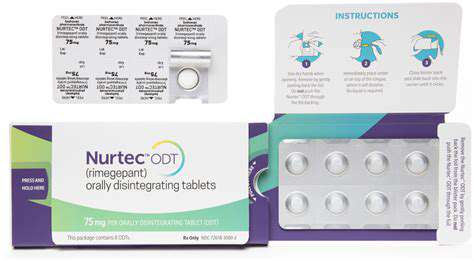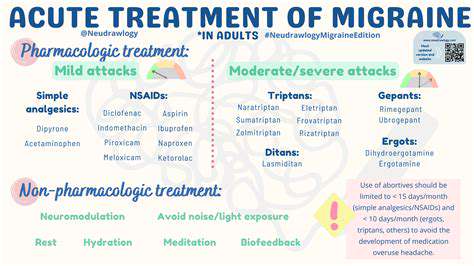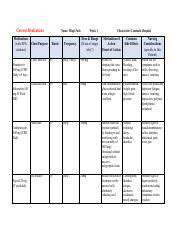
Acute Migraine Treatment with Gepants

Understanding Acute Migraine Attacks
Acute migraine episodes strike without warning, delivering excruciating pain that disrupts daily routines. These episodes typically manifest as pulsating discomfort, frequently localized to one side of the head, alongside nausea, vomiting, and heightened sensitivity to environmental stimuli. Recognizing personal migraine patterns proves essential for developing effective coping strategies. Each sufferer experiences unique symptom combinations, making personalized treatment approaches crucial.
Common precipitating factors include emotional stress, irregular sleep cycles, specific dietary components, and atmospheric changes. Maintaining detailed symptom journals helps identify individual triggers, enabling proactive lifestyle adjustments that may reduce attack frequency. Some patients report visual disturbances or tingling sensations preceding headache onset, serving as valuable warning signs.
Gepants' Mechanism in Migraine Intervention
Gepants represent a novel pharmaceutical approach targeting calcitonin gene-related peptide (CGRP) receptors. Unlike traditional migraine medications, these small molecule antagonists specifically block pain pathways without causing blood vessel constriction. Their precise molecular targeting minimizes cardiovascular risks associated with older migraine therapies. Clinical studies demonstrate gepants effectively relieve pain within two hours for many patients.
Healthcare providers emphasize gepants' favorable safety profile for patients with cardiovascular concerns. The absence of vasoconstrictive properties makes them suitable for individuals who cannot tolerate triptans. However, medical supervision remains essential when initiating gepant therapy due to potential drug interactions.
Therapeutic Advantages of Gepant Formulations
Gepants offer distinct pharmacological benefits including rapid symptom resolution and convenient oral administration. Their quick absorption profile provides faster relief compared to conventional analgesics, particularly beneficial during severe attacks. The oral disintegrating tablet format (ODT) proves invaluable when nausea prevents swallowing conventional pills.
Extended clinical observations reveal gepants maintain efficacy across multiple migraine episodes without developing medication-overuse headaches. This characteristic addresses a significant limitation of older acute treatments. Patient adherence improves significantly with medications that demonstrate consistent performance and minimal side effects.
Safety Profile and Contraindications
While generally well-tolerated, gepants may produce mild transient effects including dry mouth, fatigue, or gastrointestinal discomfort in some users. Comprehensive medication reconciliation prevents potentially dangerous interactions with strong CYP3A4 inhibitors. Regular hepatic function monitoring is advisable for patients with pre-existing liver conditions.
Special populations including pregnant women and elderly patients require careful risk-benefit analysis before gepant prescription. Thorough patient education about recognizing adverse reactions ensures timely medical intervention when necessary. Providers should review complete medication histories to identify contraindications.
Optimal Usage Guidelines
Dosing protocols vary between gepant formulations, with ubrogepant typically administered as 50-100mg doses and rimegepant as 75mg ODT. Precise timing of medication administration significantly impacts therapeutic outcomes. Patients should take the initial dose at headache onset rather than during prodromal phases for maximum efficacy.
Rescue dosing strategies should be established during initial treatment planning to prevent medication overuse. Documenting treatment responses helps clinicians optimize future therapeutic regimens. Patients must understand the importance of not exceeding maximum daily dosages regardless of pain severity.
Comprehensive Migraine Management Approach
Effective migraine control combines acute interventions with preventive strategies and lifestyle modifications. Behavioral therapies including biofeedback and cognitive techniques complement pharmacological treatments. Regular physical activity and consistent sleep schedules demonstrate measurable preventive benefits in clinical studies.
Multidisciplinary care teams provide the most comprehensive treatment approach, incorporating neurologists, pain specialists, and mental health professionals. Personalized treatment plans that address biological, psychological, and social factors yield superior long-term outcomes. Emerging digital health tools enable real-time symptom tracking and treatment adjustments.

Dosage and Administration
Acute Treatment Protocols
The standard ubrogepant regimen involves 100mg oral administration at migraine onset, with optional 100mg redosing after two hours if needed. Maximum daily intake should not exceed 200mg within 24 hours. Clinical trials demonstrate optimal results when medication is taken during mild-to-moderate pain phases rather than waiting for severe escalation.
Hepatically impaired patients require dose reduction to 50mg with careful monitoring. Concomitant use with strong CYP3A4 inhibitors necessitates either avoidance or extreme dose reduction to 50mg maximum. These pharmacokinetic considerations underscore the importance of thorough medication reviews.
Preventive Application Strategies
While primarily indicated for acute treatment, some gepants show emerging potential for preventive therapy when administered at lower frequencies. The 75mg rimegepant formulation demonstrates preventive efficacy when taken every other day in clinical trials. This dual indication offers practical advantages for patients managing both frequent and severe migraine episodes.
Special Population Considerations
Geriatric patients may require adjusted dosing due to age-related metabolic changes. Pediatric applications remain under investigation with ongoing clinical trials establishing safety profiles. Renal impairment patients need careful dose titration and more frequent follow-up assessments. Pregnancy registries continue collecting data on fetal outcomes following accidental gepant exposure.
Administration Best Practices
Oral disintegrating tablets should be placed on the tongue without water for optimal absorption. Conventional tablets must be swallowed whole with adequate hydration. Proper administration technique ensures consistent drug delivery and predictable therapeutic effects. Patients should avoid consuming grapefruit products which may alter medication metabolism.
Storage and Stability Requirements
Maintain gepant medications at controlled room temperature (20-25°C) with excursions permitted between 15-30°C. Protect from moisture and store in original packaging until use. Proper storage conditions preserve pharmaceutical stability and ensure consistent potency throughout the shelf life. Patients should regularly check expiration dates and properly dispose of unused medications.